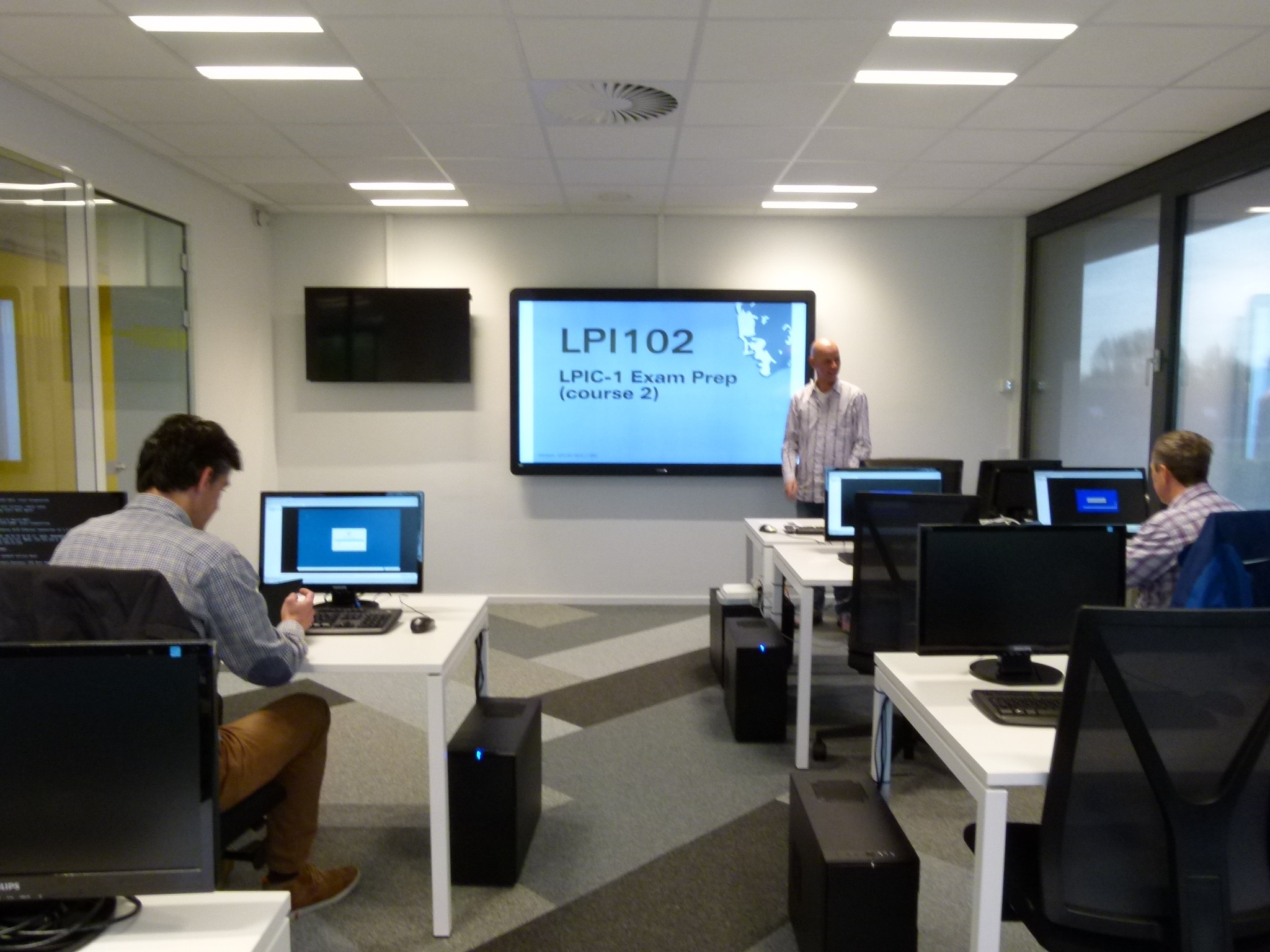Menu


- Trainingen


Het is ook mogelijk om de training virtueel te volgen. Dezelfde leerervaring als klassikaal waarbij je de trainer en medecuristen ziet en hoort maar dan vanaf thuis. De planning en kosten blijven gelijk.
Een klassikale cursus van Ictivity Training geeft je de garantie dat je uitstekend wordt opgeleid in een moderne comfortabele leeromgeving door de meest deskundige trainers op hun vakgebied. In aaneengesloten dagen volg je de training op één van onze locaties. Tijdens de klassikale training heb je de beschikking over moderne apparatuur in een rustige leeromgeving. Trainingen bestaan uit een gedeelte theorie maar je krijgt ook veel oefeningen die de dagelijkse praktijk nabootsen.
meest deskundige trainers op hun vakgebied. In aaneengesloten dagen volg je de training op één van onze locaties. Tijdens de klassikale training heb je de beschikking over moderne apparatuur in een rustige leeromgeving. Trainingen bestaan uit een gedeelte theorie maar je krijgt ook veel oefeningen die de dagelijkse praktijk nabootsen.
Ictivity Training heeft in Nederland locaties in Utrecht (Vianen) en Eindhoven, tevens is het mogelijk om een locatie naar wens aan te vragen. Indien je niet wenst te reizen, kun je de training remote volgen via Virtual Classroom
Deze leervorm begint met een intakegesprek tussen een Learning Consultant van Ictivity Training en de opdrachtgever. Hierbij inventariseren we de beginsituatie, de doelstelling, de praktijksituatie en het verwachtingspatroon van de deelnemer(s). Met de gegevens maken wij het trainingsprogramma op maat.
Voordelen:
System architects, system administrators, IT managers, VMware partners, and individuals responsible for implementing and managing vSphere architectures
This course requires completion of one the following courses or equivalent knowledge and administration experience with VMware ESX®/ESXi and vCenter Server:
1 Course Introduction
2 Management Enhancements
3 vCenter Architecture Upgrade and Migration
4 ESXI Upgrade and Enhancements
5 Virtual Machine Enhancements
6 Storage Enhancements
7 Security Enhancements
8 Network Enhancements
9 Availability Enhancements
Je kunt hier het examen boeken voor deze training: VCP6-DCV
| Code: | VS-6.7-WNE |
| Leervorm: | Klassikaal |
| Dagen: | 3 |
|
€
2045
|
Per persoon
excl. BTW |
|
Naar inschrijfpagina |
|
Deze trainingen kunnen wij ook als maatwerk bij jou / ons op locatie.